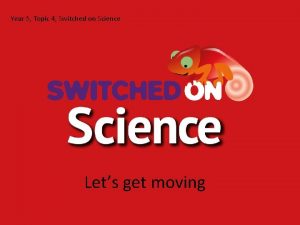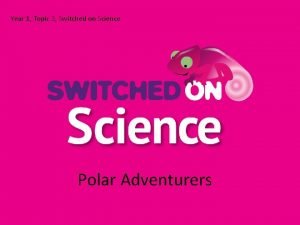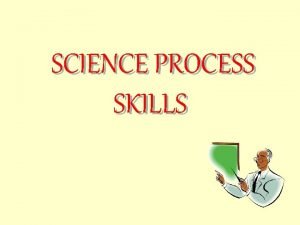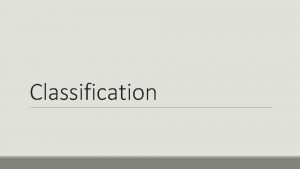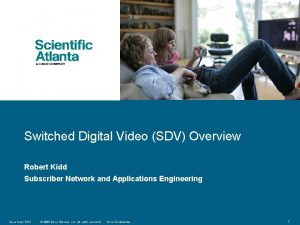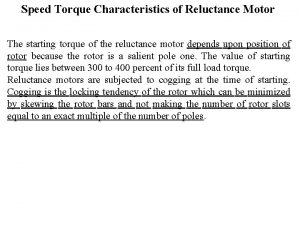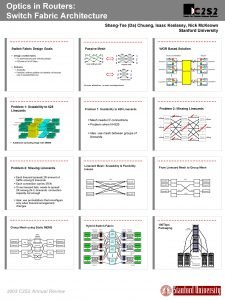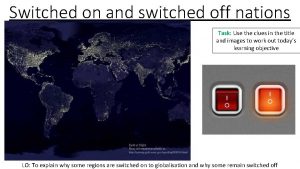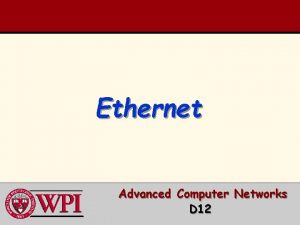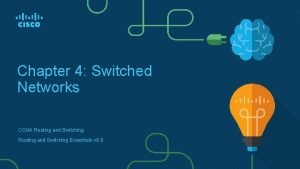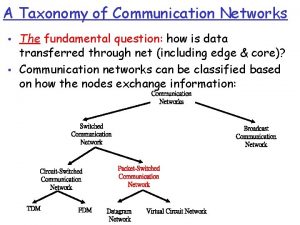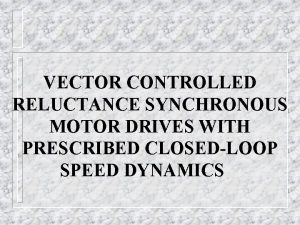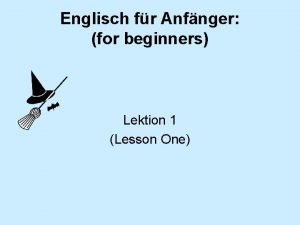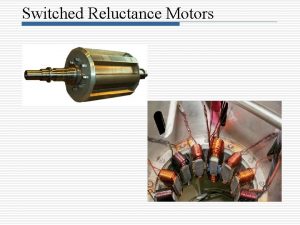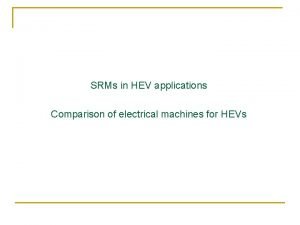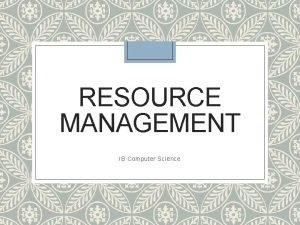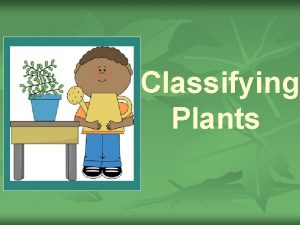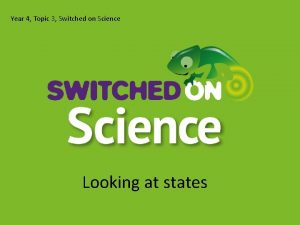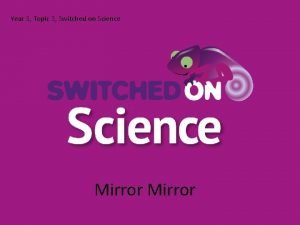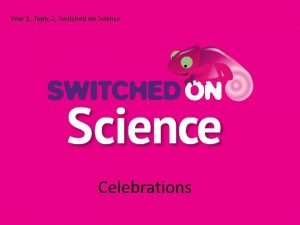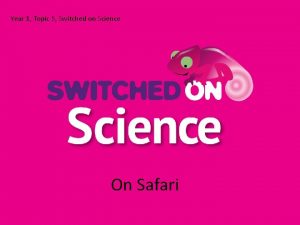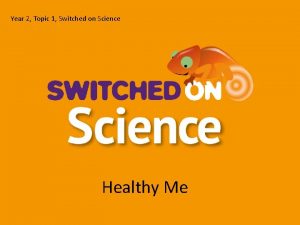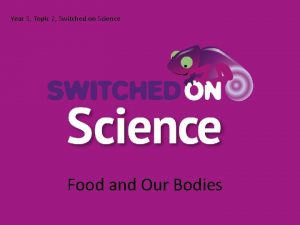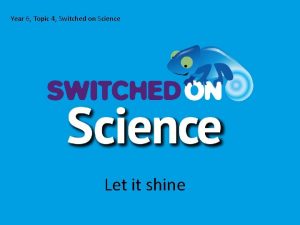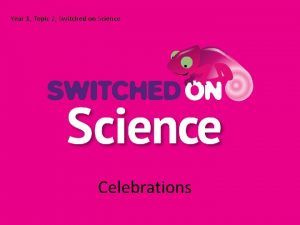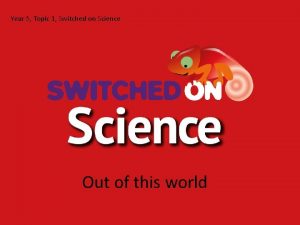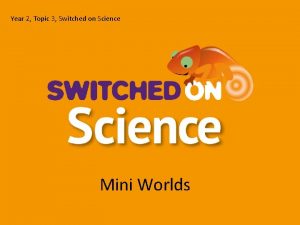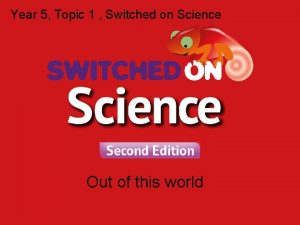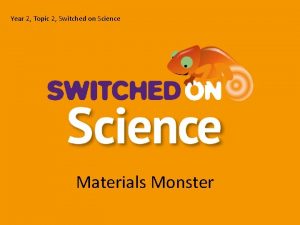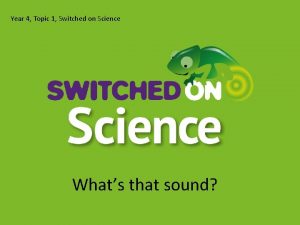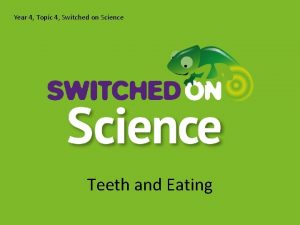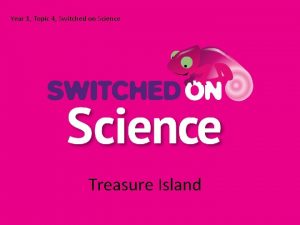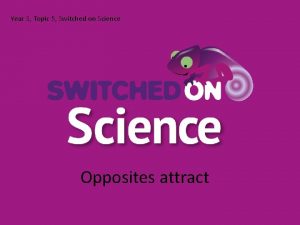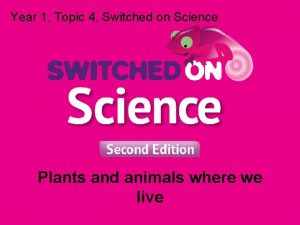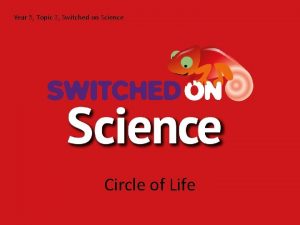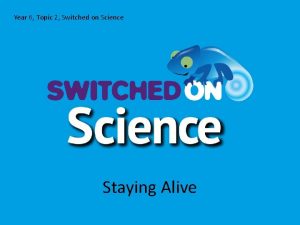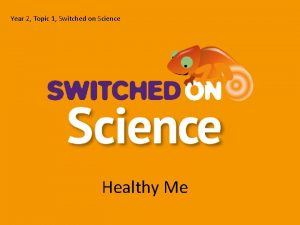Year 6 Topic 1 Switched on Science Classifying







































- Slides: 39

Year 6, Topic 1, Switched on Science Classifying Critters

Did you know? • Pears, peaches and apricots are members of the rose family? • Peanuts aren’t nuts at all. They’re a bean. • A prairie dog is not a dog at all. It’s a type of squirrel!

Let’s think like scientists! • You have found a plant that you don’t recognise. What could you do to try and name it? • Are trees plants? How can you tell?

In this topic, you will: • Understand how living things are classified into groups scientifically. • Know the difference between invertebrates and vertebrates. • Observe similarities and differences and use them to classify living things.

Key vocabulary • • • Flora Fauna Vertebrate Invertebrate Mammal Bird Amphibian Reptile Fish • • • Fungi Mushroom Toadstool Fermentation Microbe Bacteria Species Genus Organism

Spot the difference • How are these two things the same? • How are they different? • What makes an animal different to a plant?

Vertebrates There are 5 main groups of vertebrate. amphibian mammal fish bird reptile

Gives birth to live young. Doesn’t lay eggs. Has hair Mammals Feeds its young with milk. Warm-blooded

Some lays jelly-like eggs. Slimy, scaly skin. Fish Lives in water. Has gills. Cold-blooded

Lays jelly-like eggs. Has to return to water to lay its eggs. Slimy, smooth skin. Amphibians Warm-blooded

Lays leathery eggs on land. Dry, scaly skin. Reptiles Cold-blooded

Lays eggs with a hard shell. Covered in feathers. Has wings. Birds Has a beak. Does not have teeth. Warm-Blooded

How are these two animals the same? How are they different?

Mammals don’t lay eggs. They give birth to live young.

Amphibian eggs are jellylike and laid in water like a/w 6. 14 this frog spawn. Some fish lay jelly-like eggs. Others lay large eggs, like this sharks egg. Reptile eggs are laid on land, and have leathery shells. Birds lay eggs with hard shells.

Reptiles are cold-blooded. They have to sit in the sun to warm themselves up. Fish and amphibians are also cold blooded. Birds and mammals are warmblooded. They can live in places where it would be too cold for reptiles and amphibians.

Invertebrates • Invertebrates do not have a backbone • Some have a hard shell on the outside of their bodies called an exoskeleton • Some don’t have a skeleton at all.

How are these two animals the same? How are they different?

Insects Has a hard skeleton outside the body. Has six legs Body has three main segments Such as : beetles, bees, ants

Spiders Has a hard skeleton outside the body. Has eight legs Body has two main segments Such as : spiders and scorpions

Marvellous Microbes • Bacteria are tiny, single celled organisms. • They are quite different to plants and animals. They reproduce by splitting themselves in two. • They are so small that we cannot see them without a microscope. • Some bacteria cause diseases, but other bacteria can be very useful to us.

Bad Bacteria: Plague was caused by a bacteria called Yersinia pestis. This was spread to humans by fleas which were carried on rats. The Black Death 1346 -1350 Between 75 million and 200 million people died. The Great Plague of London 1664 -1666 Roughly 100, 000 people died.

Good Bacteria Some foods wouldn’t exist without bacteria. Special bacteria change milk into cheese and yoghurt.

• Bacteria (and fungi) play an important role in decomposing dead / waste material. • Without bacteria, things would not rot away.

Is it a plant? • In what ways is this mushroom like plant? • In what ways is it not like a plant?

• Mushrooms, toadstools and mould are all examples of fungi. • They are not plants because they cannot make their own food. • They do not make pollen like plants do, they reproduce by making spores. • They don’t have any chlorophyll.

Yeast • Yeast is a single-celled fungi. • It is very important for making bread, beer and wine.

Mouldy Food • What happens when food turns mouldy? • What different ways can we stop our food going mouldy? • What did people do before the days of freezers to preserve their food?

The Kingdoms • Living things can be grouped into five main kingdoms: • Animals • Plants • Fungi • Protists • Bacteria

• Animal: Any multicellular organism that feeds on plants or other animals. • Plant: A living organism that is able to make its own food by the process of photosynthesis. • Fungi: A group of organisms that include microorganisms like yeast and moulds. Examples of fungi include athlete’s foot, ringworm, mushrooms and toadstools. • Bacteria: Simple single-celled organisms without a nucleus. • Protists: A group of microbes that do not fit into the other categories. Include amoeba, algae and protozoa.

Horse Chestnut Oak Holly Birch Sycamore Can you make a key to identify these leaves? Ivy

The system we use to classify living things was developed by Carl Linnaeus He was born in Sweden on 23 rd May 1707.

• Linnaeus spent a lot of his life studying and collecting plants and animals. • At that time, names were very confusing because people in different places would have different names for the same plant or animal. • For example in different parts of the world, the word squirrel can mean different animals.

German: French: eichhörnchen écureuil Plus the same animal could be called different things in different languages. Italian: Portuguese: scoiattolo esquilo

• Linnaeus wanted a system that everyone could understand. • He wanted every living thing to have a name that was unique – a name that only that particular animal or plant had. • In his system - each plant and animal was given a name made up of two words in Latin. • The first word is a family name, like your surname. This is called the genus. The second name is called the species, and is like your first name. Smith, John

For example, the Horse Chestnut was called Aesculus hippocastanum Genus name. Species name. Named after the roman name for an edible acorn Hippo was the latin for horse Castanum is the latin for chestnut

• Living things with the same family name are related. • For example all bushy tailed squirrels were given the name Sciurus meaning “Shadow tail”. – Sciurus vulgaris = red squirrel – Sciurus carolinensis = grey squirrel

This group of plants have the name Echinocereus – From the Greek word “echinos” meaning a porcupine, and cereus meaning “like a candle”. Can you think why? They are sometimes called Hedgehog Cactus!

• Linnaeus published this system in a book. • Scientists soon started using this way of naming every living thing on Earth. • Carl Linnaeus had invented a way of naming living things that everyone all over the world could understand.
 Advantage of circuit switching
Advantage of circuit switching Switched on science year 4
Switched on science year 4 Switched on science
Switched on science Classifying some year 2009 strategies
Classifying some year 2009 strategies How to answer what is your favorite subject
How to answer what is your favorite subject Cat classification chart
Cat classification chart What is scientific
What is scientific Classifying science process skills
Classifying science process skills The science of naming and classifying organisms
The science of naming and classifying organisms A clincher sentence is
A clincher sentence is Narrow
Narrow Sdv video
Sdv video Switched cap building block
Switched cap building block Torque speed characteristics of switched reluctance motor
Torque speed characteristics of switched reluctance motor Switched fabric architecture
Switched fabric architecture Circuit switched wan
Circuit switched wan Backbone network components
Backbone network components North korea switched off case study
North korea switched off case study Switched ethernet vs shared ethernet
Switched ethernet vs shared ethernet Switched capacitor dc-dc converter
Switched capacitor dc-dc converter Public switched telephone network diagram
Public switched telephone network diagram Circuit switched networks
Circuit switched networks Spstnn
Spstnn Public switched telephone network diagram
Public switched telephone network diagram Public switched telephone network diagram
Public switched telephone network diagram Slotted optical switches
Slotted optical switches Funmail2
Funmail2 Cisco borderless networks
Cisco borderless networks Network taxonomy
Network taxonomy Switched reluctance motor
Switched reluctance motor Datagram switching
Datagram switching Managing entity network management
Managing entity network management Switched witches
Switched witches Virtual circuit switching example
Virtual circuit switching example Introduction to switched networks
Introduction to switched networks Torque speed characteristics of switched reluctance motor
Torque speed characteristics of switched reluctance motor Hendershot
Hendershot Bcmsn
Bcmsn Year 6 memories poem
Year 6 memories poem Ib computer science topic 6
Ib computer science topic 6

